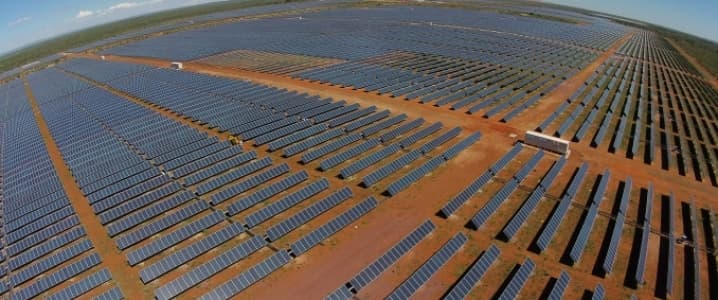Not all forms of energy are equal; electrical energy is more precious, and costs much more than heat or mechanical energy. Companies such as SolarCity are wasting taxpayers’ money by increasing the grid’s entropy, and from a physics point of view, solar thermal makes more sense, and ultimately, it’s only these incentives that make SolarCity an economic reality.
To properly talk about the question of what’s best to put on your roof, a few terms need to be defined.
Exergy is the amount of energy available to be used in a system. A cup of boiling water can only release energy into its environment until it is in equilibrium with its surroundings.
Entropy is the amount of disorder caused by making useful work. Turbine engineers can look at where entropy is created in an effort to reduce losses such as frictional loss and thermal loss; electrochemical losses can also be determined using entropy.
In the case of rooftop solar, radiative heat energy is turned either into electricity using photovoltaic panels, or the heat is collected for other purposes using solar heating panels. Solar heating can generally be used for three purposes: heating your water at home, heating your home, or cooling your home. Cooling your home using heat is done using absorption coolers using various thermodynamic processes, and can drastically reduce electricity use for air conditioning in warmer climates. Passive measures can also reduce heating costs by up to 50 percent, which in turn will further lower A/C costs.
From an efficiency standpoint, solar thermal collectors can collect up to 74 percent of the solar energy beaming onto them – this by itself means that the building underneath will require less heat. Combine that with better insulated windows, doors, and walls, and your heating and cooling costs – and energy use – will plummet. Related: “Hot Lesbian” Ad Gets Canadian Oil Sands More Publicity Than It Deserves
U.S. companies hold the claim that heating your house can be done with only a hair dryer, and cooled with dehumidification. Commercial solar panels can collect up to 22 percent of the energy landing on them. There are considerable system losses and entropy production from turning solar radiation into electricity, and then back into heat.

Energy.gov cost breakdown for solar water heating
In some places such as some parts of Ontario or New York, the grid requires distributed solar to be consumed locally due to network issues such as older transformers. Losses and investment costs pile up when transformers need to be replaced to allow for two-way electrical travel from rooftop solar. There are many other grid provisions and tax incentives to help facilitate rooftop solar panels, which are inefficient from a physics point of view, and ultimately taxpayers bear the brunt through increased grid costs. This is even without considering that solar thermal panels are three times better at what they do, compared to photovoltaic panels. Related: Oil Prices Fall Below $40 As OPEC Ramps Up Output
If the question is: how quickly can we reduce our carbon footprint? Often it’s best to find ways to reduce our entropy production. Unfortunately, many markets today are dis-incentivizing this to help build up industries or to create what policymakers believe would be an ideal grid.
From a consumer standpoint, SolarCity has been advertising that lowering electrical bills over the course of the solar installation will pay for the system in 20 years. However, no-money-down loans for these systems can have them paid for in 5 to 10 years, leading to much greater savings for the customer.
SolarCity not only does not make entropic sense, it also does not make sense economically for the customer. What makes more sense is systems like Sun Bandit that can act as a way of peak-shaving electricity, thereby reducing system rates overall.
ADVERTISEMENT
Rooftop solar generates only a small fraction of what utility-scale solar generates in the U.S. today. So far this year, utility-scale solar has generated over 800 times the amount of energy as rooftop solar. As more consumers start valuing the reliability and resilience in the grid accurately, business models such as SolarCity will make less sense. Ultimately, the power is in the customers and taxpayers hands in which direction the grid should go.
By Matt Slowikowski for Oilprice.com
More Top Reads From Oilprice.com:
- The World’s Biggest Oil Discovery Just Opened For Foreign Ownership
- Pioneer’s $2 Operating Costs: Fact Or Fiction?
- LNG Investments At Serious Risk If China Succeeds On Shale



















Around 2010 large scale Lithium was about $1000 per kWh. Now it's $300 ($250 if you are Tesla). I predict $100 or less by 2020.
Look out people, it's coming, sooner than you think!